As technology evolves and companies can offer ever-increasing levels of customization and attention to consumers, the need for clarity in setting goals for your customer success and support teams is crucial if you want to offer profound and meaningful customer experiences.
What customer success goals should you set for your customer success team? Which metrics should you prioritize in customer success? We asked some of the brightest leaders in the industry about what they personally find to be most important in goal setting.
Read on for the top customer success your should measure frequently. We will also discuss the best customer success tips and practices when setting goals. Finally, we will also tell you which customer success software you should use to measure and achieve your goals!
Let’s dive in!
Goals to Definitely Measure for Your Customer Success Strategy
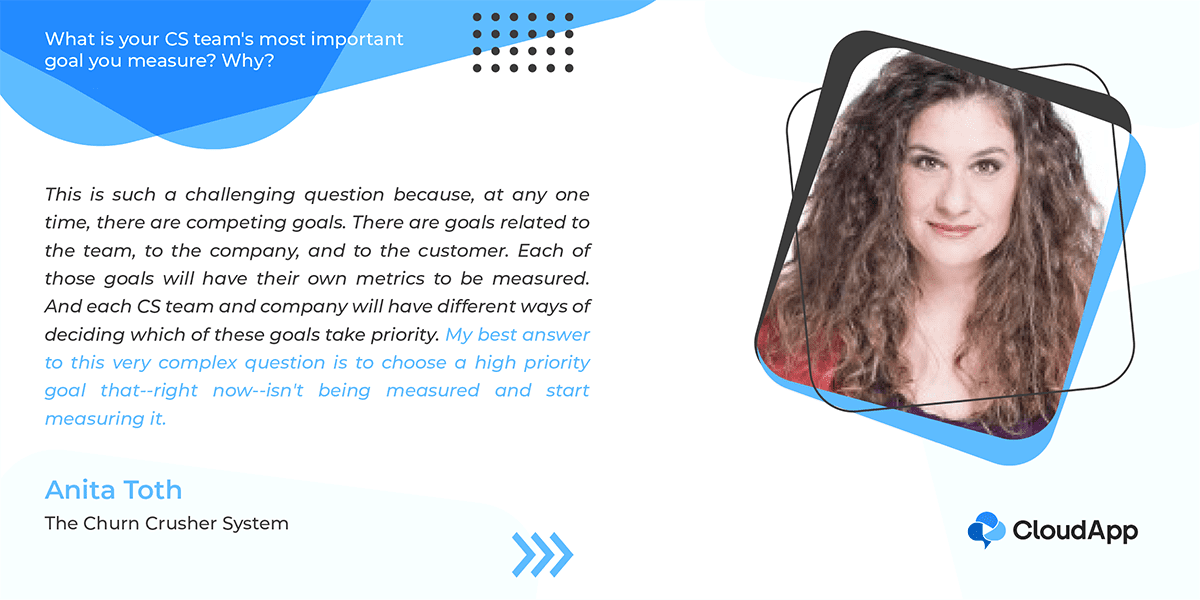
There are many ways you can improve customer experience, but which high-priority goals should you start measuring today to know if you are on the right course? Here are 12 of the best:
1. Customer Satisfaction
Customer satisfaction is a key performance indicator that assesses how content and fulfilled customers are with a company’s product or service. It goes beyond mere satisfaction with the product itself and delves into the quality of interactions and relationships that the customer success team builds with the clients.
To measure customer satisfaction, your customer success teams can use different methods:
- Customer surveys and feedback to understand perceptions and service quality
- Tracking genuine connections made by the customer success team, reflecting honesty and vulnerability in interactions
- Net Promoter Score (NPS) to gauge loyalty and willingness to recommend
- Monitoring customer retention rates as a sign of satisfaction
These metrics allow the customer success team to gauge satisfaction levels and work proactively to enhance customer experience, fostering loyalty and long-term relationships.
“We measure a range of key performance indicators (KPIs), but most important is meaningful connections with customers. The most effective way to understand people and have the opportunity to share insight that they value is to be real, honest, and even vulnerable when appropriate. Those type of higher-level interactions come from people speaking with people. That’s why we measure how often our customer success team is creating connections.” – Brian Hansen | Director of Customer Success at Zywave
2. Net Retention
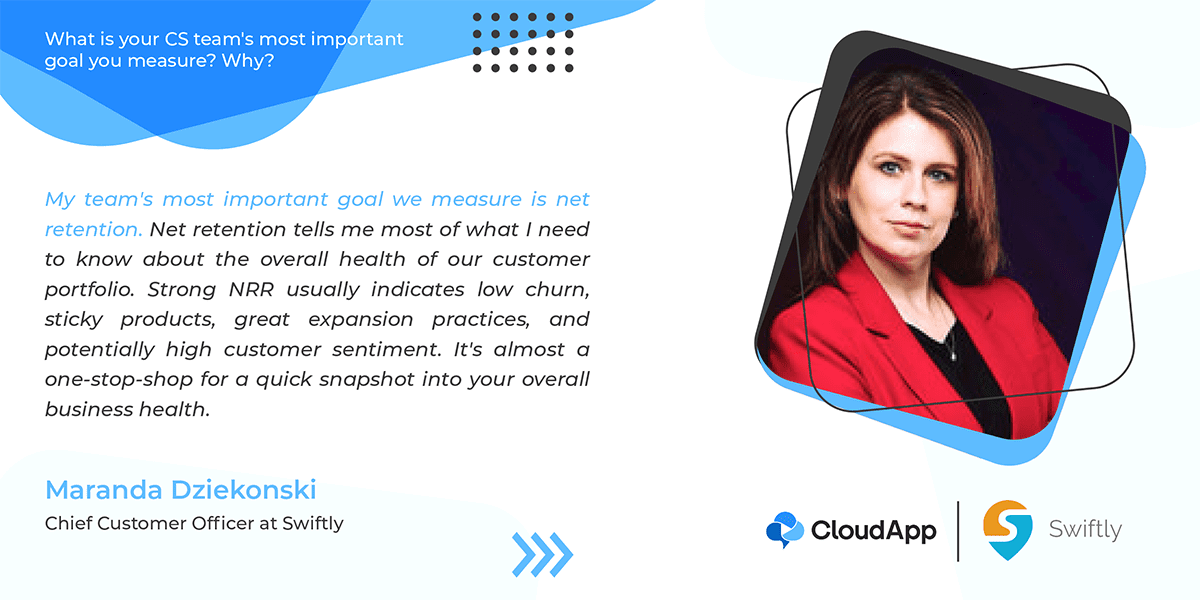
Net retention is a critical goal for customer success managers, reflecting the overall vitality of customer relationships within a business. It provides a comprehensive view of customer success by considering not only the retention of existing customers but also the expansion of revenue within the existing customer base.
Here’s how to calculate net retention as a customer success goal:
Net retention revenue= (Starting Revenue + Expansion Revenue – Churn Revenue – Contraction Revenue) / Starting Revenue × 100
Here’s what each component means:
- Starting Revenue: The revenue at the beginning of the period.
- Expansion Revenue: Additional revenue from existing customers through upsells, cross-sells, or renewals.
- Churn Revenue: Revenue lost from customers who have left.
- Contraction Revenue: Revenue lost from downgrades or reductions in service.
The resulting percentage gives a picture of revenue health, with numbers over 100% indicating growth within the existing customer base, and numbers below 100% signaling potential issues with customer retention or revenue contraction.
“My team’s most important goal we measure is net retention. Net retention tells me most of what I need to know about the overall health of our customer portfolio. Strong net revenue retention usually indicates low churn, sticky products, great expansion practices, and potentially high customer sentiment. It’s almost a one-stop-shop for a quick snapshot into your overall business health.” – Maranda Dziekonski | Chief Customer Officer at Swiftly
3. Customer Lifetime Value (CLTV)
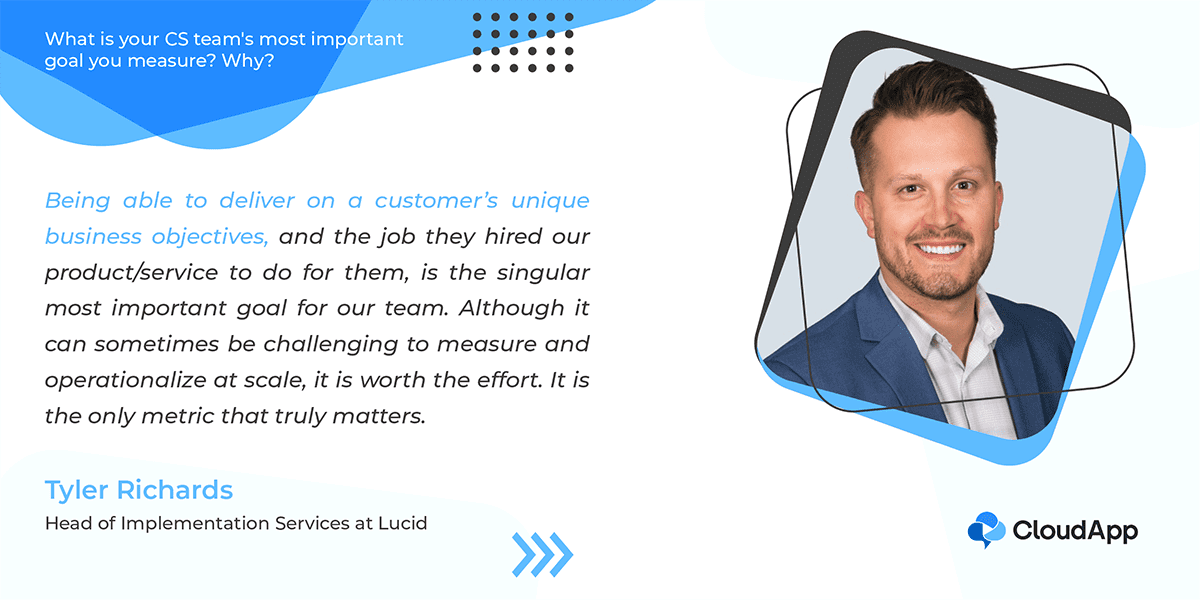
The goal focuses on ensuring that a product or service meets each customer’s specific needs and expectations. It’s about aligning the functionalities and benefits of what’s being offered with the unique business objectives that the customer has in mind.
To measure customer lifetime value, customer success teams can use this formula:
CLTV = (Average Value of a Sale) × (Number of Repeat Transactions) × (Average Retention Time in Months or Years) – (Customer Acquisition Cost)
It means;
- Average value of a sale: The average amount of money made from a sale to a customer
- Number of repeat transactions: The average number of times a customer will buy from the company during their lifetime
- Average retention time in Months or Years: The average time a customer continues to buy from the company
- Customer acquisition cost: The total cost of acquiring a new customer, including marketing and sales expenses
When your dedicated customer success team calculates this, they’ll understand the total revenue your business can expect from a customer throughout the customer journey. Then, you can make informed decisions about customer acquisition and retention strategies.
“Being able to deliver on a customer’s unique business objectives and the job they hired our product/service to do for them is the singular most important goal for our team. Although it can sometimes be challenging to measure and operationalize at scale, it is worth the effort. It is the only metric that truly matters.” – Tyler Richards | Head of Implementation Services at Lucid
4. Customer Education
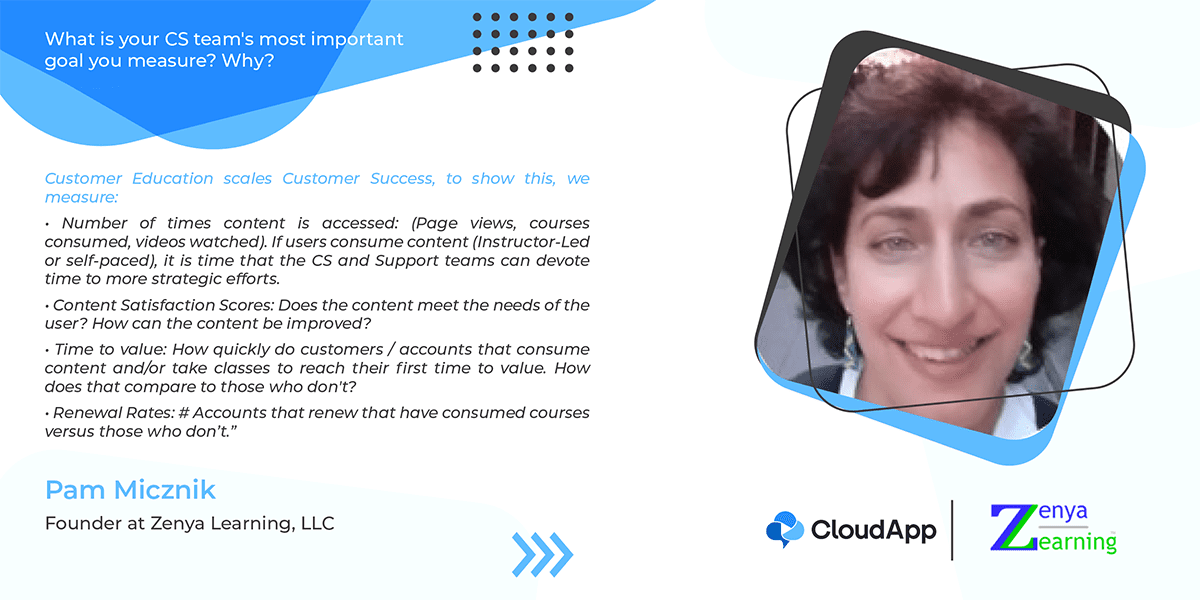
Customer education empowers customers with the knowledge and skills needed to effectively utilize a product or service. When a customer success manager provides educational content, they enable customers to achieve value more quickly, freeing time for more strategic efforts. Here’s how you can measure this goal, according to our Pam Micznik:
“Customer Education scales Customer Success. To show this, we measure:
- Number of times content is accessed: (Page views, courses consumed, videos watched). If users consume content (Instructor-Led or self-paced), it is time that the customer success and support teams can devote time to more strategic efforts.
- Content satisfaction scores: Does the content meet the needs of the user? How can the content be improved?
- Time to value: How quickly do customers/accounts that consume content and/or take classes reach their first time to value? How does that compare to those who don’t?
- Renewal Rates: # Accounts that renew have consumed courses versus those that don’t.” – Pam Micznik | Founder at Zenya Learning
5. Desired Outcomes
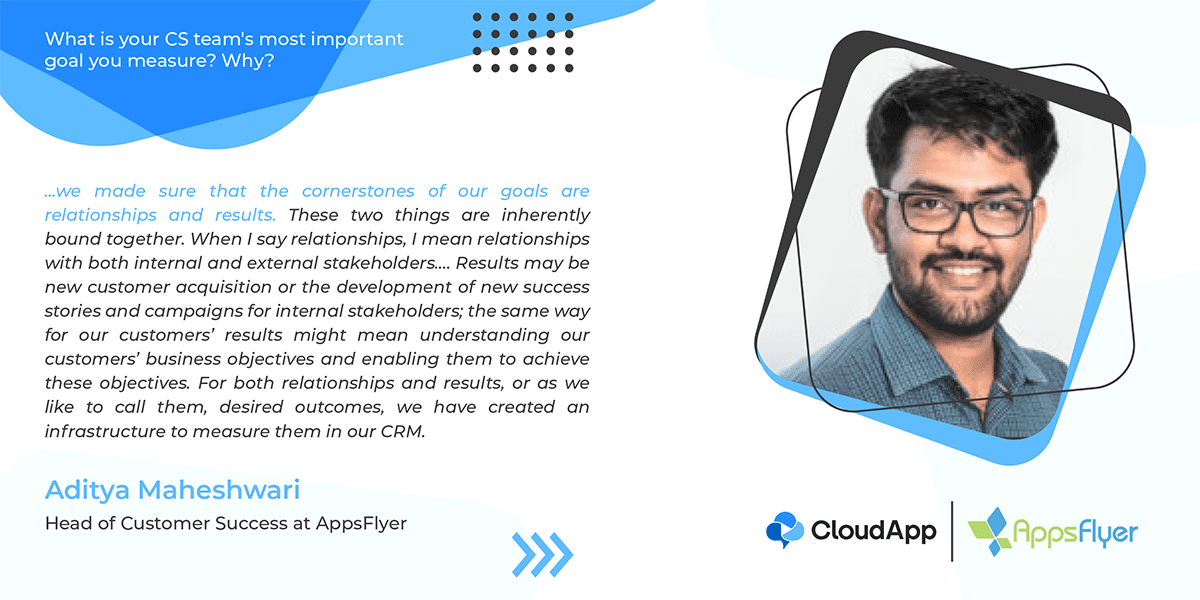
This goal underscores the importance of cohesive collaboration and alignment in driving customer success, with measurable outcomes reflecting the effectiveness of these efforts. It emphasizes the interconnectedness of building strong, strategic relationships with both internal and external stakeholders and achieving positive results that align with customer objectives.
To measure this goal, customer success managers can:
- Track relationship metrics: Monitor the quality and strength of relationships with internal teams and external customers through regular surveys, feedback, and collaboration tools
- Analyze results: Evaluate the positive outcomes driven by these relationships, such as new customer acquisition, success stories, or achievement of customer business objectives
- Utilize CRM infrastructure: Implement a structured system within the Customer Relationship Management (CRM) platform to measure both relationships and results systematically
“I think any customer success manager will attest to it – customer success is not something that is the work of a single person or only one team. But the customer success team is the lynchpin that ties everything together – from the C-level to the last intern and enables the customers to thrive and grow in a B2B world. With this in mind, we made sure that the cornerstones of our goals are relationships and results. These two things are inherently bound together.
When I say relationships, I mean relationships with both internal and external stakeholders. Whether it is the internal sales and marketing teams or cross-functional customer teams – building strong, strategic, and diverse relationships makes sure that every single interaction carried out is with one singular vision in mind. And that is to positively impact our customers’ success and maintain the highest level of customer satisfaction.
The success of these relationships can only be gauged by the positive results that they drive. Results may be new customer acquisition or the development of new success stories and campaigns for internal stakeholders; the same way for our customers’ results might mean understanding our customers’ business objectives and enabling them to achieve these objectives.
These are the outcomes that drive customer success at our organization. For both relationships and results, or as we like to call them, desired outcomes, we have created an infrastructure to measure them in our CRM.” – Aditya Maheshwari | Head of Customer Success at AppsFlyer
6. Verified Outcomes
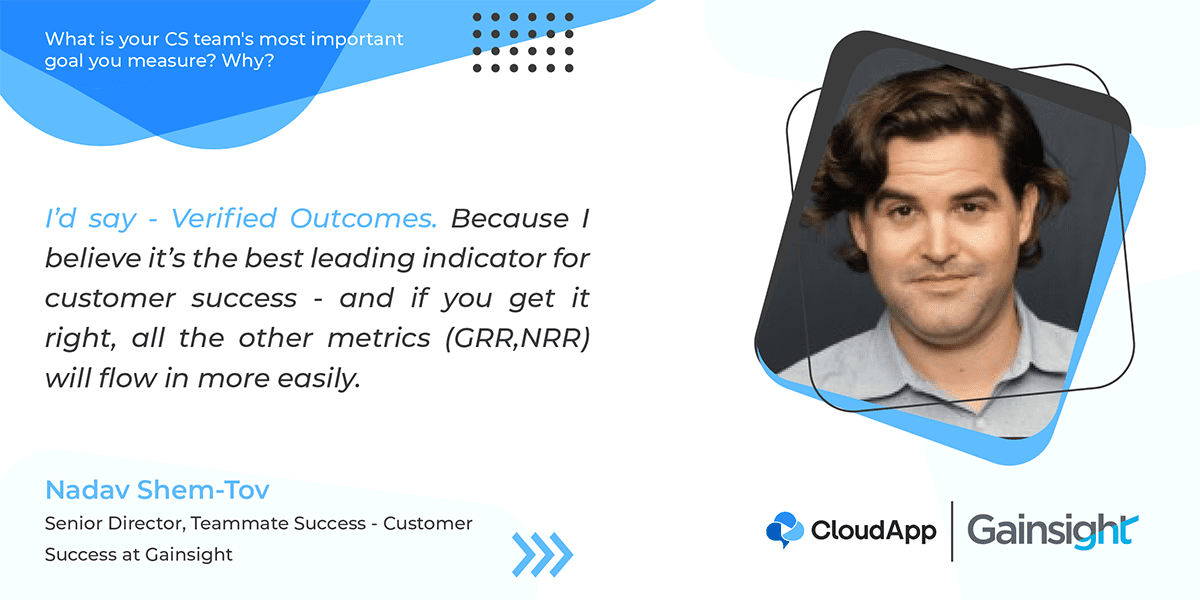
Verified outcomes refer to the tangible and confirmed results achieved through a product or service. It’s a leading indicator for customer success, directly reflecting the value delivered to the customer.
Your customer success managers can measure it this way:
Verified Outcomes Score = (Number of Achieved Customer Goals) / (Total Number of Set Goals) × 100
“I’d say – Verified Outcomes. Because I believe it’s the best leading indicator for customer success – and if you get it right, all the other metrics (GRR,NRR) will flow in more easily.” – Nadav Shem-Tov | Senior Director, Teammate Success- Customer Success at Gainsight
7. Customer Engagement
Customer engagement assesses the frequency and depth of customer interactions with a product or service. It’s a vital metric for understanding how involved and committed customers are.
You can measure this customer success goal by calculating:
Customer Engagement Score = (Number of Active Interactions) / (Total Number of Users) × 100
This formula helps quantify the level of active engagement among the customer base, providing insights into how effectively the product or service resonates with users. It’s a valuable metric for customer success teams looking to foster deeper connections and drive ongoing customer loyalty.
8. Customer Onboarding
Customer onboarding is the process of integrating new customers with your product or service. As part of customer success management, it’s essential to ensure that customers understand how to use what they’ve purchased and feel supported during the initial stages.
You can calculate customer onboarding success by measuring the time it takes for a customer to reach a specific milestone or achieve a particular goal with the product. With this, you can estimate how effectively your customer success team guides new customers, fosters satisfaction, and encourages long-term engagement.
9. Daily Active Users
Daily Active Users (DAUs) are the number of unique people who engage with a product or service within a 24-hour period. It’s a key customer success metric to understand user engagement and the overall popularity of a product.
You can measure DAUs by tracking the number of distinct users who log in, interact, or perform any specific activity within your product or service during a single day. Most analytics tools provide this data, allowing you to monitor trends over time and assess how product or marketing strategy changes may influence daily engagement. It’s a valuable insight for customer success and growth!
10. Net Promoter Score
The Net Promoter Score is a vital customer success metric that customer success teams should measure. Your customer success team will collect customer feedback to calculate customer loyalty and willingness to recommend the product or service to others.
You can measure and grow NPS by asking customers a single question: “On a scale of 0 to 10, how likely are you to recommend our product/service to a friend or colleague?” Based on their response, categorize them into:
Promoters (9-10): Loyal enthusiasts are likely to refer others.
Passives (7-8): Satisfied but unenthusiastic customers.
Detractors (0-6): Unhappy customers who may spread negative feedback.
You can then calculate NPS as follows:
NPS = (Percentage of Promoters – Percentage of Detractors) × 100
11. Customer Health Score
Customer health score is a composite metric that provides an at-a-glance view of how well a customer is adopting, enjoying, and deriving value from a product or service. It’s a vital tool for customer success specialists to proactively manage customer relationships and identify potential issues before they escalate.
To calculate this metric for your customer success strategy, combine vital factors like usage patterns, satisfaction scores, engagement levels, and renewal rates. You can then weight these factors based on their importance and combine them into a single score. A high score indicates good customer success, while a low score may indicate a problem your team needs to address.
12. Renewal Rates
Do you want to measure customer loyalty and satisfaction? The renewal rate will tell you how many want to stick to your product after finishing their initial contract period. Here is a formula that your customer success team can use:
Renewal Rate = (Number of Customers Renewed) / (Number of Customers Up for Renewal) × 100
5 Tips and Best Practices for Setting Customer Success Goals
If you want a winning customer success strategy, it is best to have the best tips and practices that your customer success managers follow. Here are the best five to start with:
1. Set Clear Goals with No Room For Misinterpretation
When you communicate your goals clearly to all teams, you ensure everyone understands their roles and the objectives.
For example, if a goal is to increase customer retention by 15% in the next quarter, every department, from sales to support, must understand their specific responsibilities in achieving this target.
Clear communication and alignment across teams foster collaboration and prevent misunderstandings, making the path to achieving the goal more streamlined and effective. It creates a unified effort where everyone works towards a common purpose.
2. Utilize the SMART Framework
You want to be strategic when designing your customer success strategy. The SMART framework ensures each goal is well-defined and achievable. Here’s what it means:
- Specific: Your goals should be clear and specific, outlining precisely what is expected. For example, instead of saying “increase customer satisfaction,” a specific goal might be “increase customer satisfaction ratings by 10% within six months.”
- Measurable: Each goal must have criteria for tracking progress and determining success. Using quantifiable metrics ensures you can monitor progress
- Achievable: You can only set realistic and attainable goals for your customer success team. So, considering available resources and constraints
- Relevant: Each goal must align with broader business objectives and the mission of the customer success team
- Time-bound: Setting a timeframe creates a sense of urgency and helps plan and prioritize efforts
3. Set Short-Term and Long-Term Goals
This balanced approach aligns immediate targets with overarching strategies for customer success.
Short-term goals, like improving response time by 20% monthly, provide quick wins and immediate focus. They offer tangible progress and can boost team morale. On the other hand, long-term goals, like expanding into a new market within two years, align with the broader vision of the company and guide strategic planning.
Balancing these two types of goals ensures that the team is motivated and engaged in the present while keeping an eye on the future growth and direction of the organization. It creates an actionable and aspirational roadmap, fostering a dynamic and forward-thinking customer success strategy.
4. Assign Ownership Of Goals
This customer success approach ensures accountability and fosters leadership within the team. When you designate specific team leaders as the owners of respective goals, you create clear lines of responsibility.
These “goal owners” oversee progress, address challenges, and drive the customer success team to succeed. For instance, if you have a goal to decrease customer churn by 15%, you would assign ownership of this objective to a team leader with expertise in retention strategies. They will then devise, execute, and supervise the required initiatives to attain it.
5. Regularly Review and Adjust Your Goals
You can do so by consistently tracking progress and making essential modifications. This guarantees that your goals consistently align with changing business demands and market dynamics. Monitoring ongoing progress empowers you to respond proactively, ensuring your strategies stay effective and relevant.
The 3 Best Customer Success Tools to Help You Achieve Your Customer Success Goal
The best tools guarantee customer success. If you want to empower your customer success teams, here are the three tools that will enhance engagement, monitor customer health, improve communication, and ensure customer satisfaction, among other customer success objectives:
1. Zight (Formerly CloudApp)

Zight is the best tool for customer success because it offers many benefits that enhance communication, collaboration, and productivity.
It is a good communication tool that lets you communicate faster with your customers by sharing visual information such as screenshots, videos, and GIFs. With visual communication for customer success, you avoid lengthy explanations and misunderstandings by showing instead of telling.
How Zight boosts customer success programs:
This customer success tool also reduces the need for meetings. Instead of lengthy meetings, you can create step-by-step instructions for your customers through videos, GIFs, or screenshots. You will save time and resources by providing easy-to-follow guides that increase customer satisfaction and retention.
You can also create engaging and interactive visual content for your customers, boosting their understanding and loyalty. Add annotations, comments, emojis, and more to your videos or screenshots to make them more appealing and informative.
To give you communication with the personal touch that all customers want, use the versatile screen recorder that offers various functionalities to suit your needs. Zight features a webcam recorder you can use when recording your screen, videos, and GIFs. If you feature in these recordings, your customers will be happier knowing they are dealing with a real person and that you also took the time to address their needs personally. You can also edit your recordings with crop, trim, blur, and more tools.
As you know, the goals you set for customer success must be measurable. That’s why your customer success tool needs the capability to measure the impact of your communication with your customers. Use the Analytics feature on Zight to see who viewed your content and how they interacted with it. You can use these insights to improve your customer success strategy and achieve your goals!
Customer success also relies on collaboration between teams. Your teams can collaborate on projects related to customer success – they can invite other team members to join projects, share customer feedback, and make changes. They can also integrate Zight with other platforms they use daily, such as Zapier, Microsoft Teams, Slack, LucidChart, Jira, and Confluence.
Zight Pricing:
As your best customer success software, Zight is available on any desktop, including Mac, Windows, and as a Chrome extension. You can download it easily and start with a free trial for 25 projects. After that, you can choose a pro plan that suits your budget for as low as $9.95.
2. Zendesk
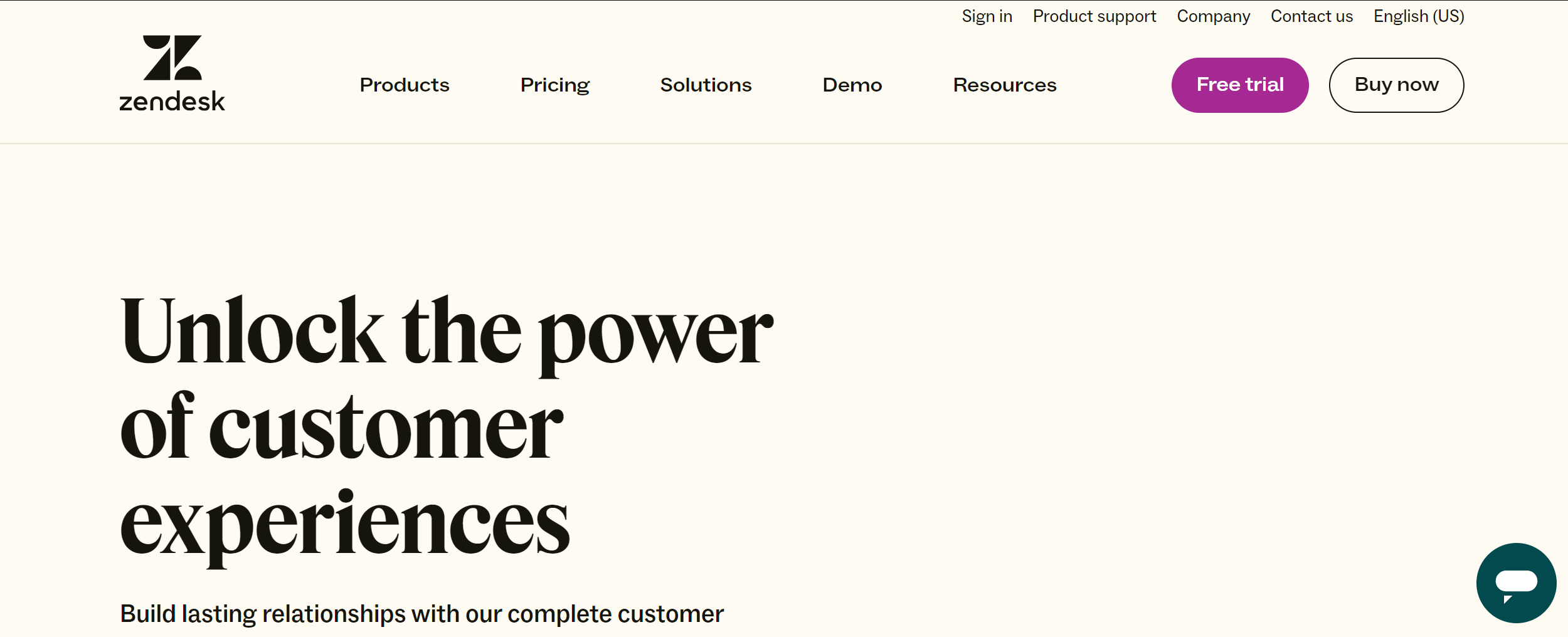
Zendesk is a customer success tool that offers a comprehensive view of customers and their interactions with products and services, tracking behavior, satisfaction, feedback, and loyalty across channels.
It enables proactive engagement, allowing the creation of personalized onboarding, training, and support programs, and targeted messages based on customer segments and lifecycle stages. Zendesk also helps reduce churn and increase retention by identifying and resolving issues before they escalate, monitoring customer health, and triggering automated workflows to prevent churn.
Additionally, Zendesk allows you to advocate for customers and enhance products and services based on feedback. It facilitates the collection and analysis of customer data, generation of insights and reports, and sharing with internal teams and stakeholders.
3. Salesforce
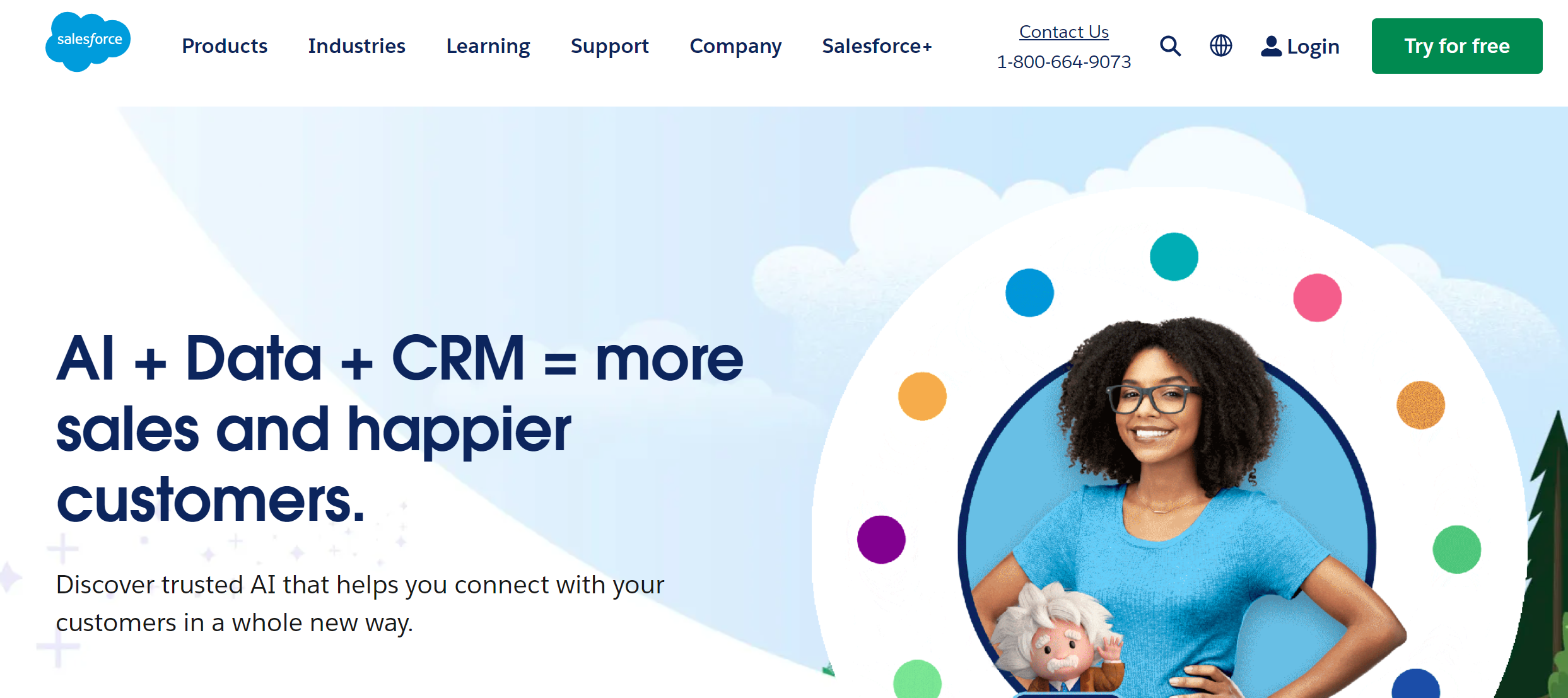
Salesforce is another customer success tool that allows companies to focus on their customers in every experience, delivering real-time engagement.
For instance, the Customer Success Group within Salesforce comprises experts who provide guidance, support, and best practices. They offer various engagement levels, from self-service resources to dedicated success managers tailored to customer needs.
The Customer 360 Platform connects data across sales, service, marketing, and more, giving customer success teams a unified view of their customers. This facilitates personalized and consistent experiences across all touchpoints. Salesforce’s learning platform, Trailhead, empowers teams to enhance their skills in products, technologies, and best practices. With interactive content, users can learn at their pace and earn credentials.
The Trailblazer Community, a global network of customers, partners, employees, and experts, fosters collaboration and knowledge sharing. It allows customer success teams to connect with peers and access exclusive events and resources.
Frequently Asked Questions About Goals To Measure for Customer Success
a) What are the top 5 priorities in customer success?
Customer success focuses on building and maintaining strong relationships to help customers achieve success with your business offering. Here are your top five priorities when crafting a good strategy:
- Customer retention: Keeping existing customers engaged and satisfied to reduce churn
- Customer satisfaction: Ensuring customers are happy with the products or services, often measured through feedback and surveys
- Onboarding and education: Providing customers with the necessary resources and support to effectively use the product or service
- Upselling and cross-selling: Identifying opportunities to offer additional products or services that add value to the customer
- Monitoring customer health: Regularly assessing customer interactions and feedback to identify potential issues and opportunities for improvement
b) What is a good goal for customer service?
Your customer service should consistently provide timely, empathetic, and solution-oriented support to customers. This involves understanding customer needs, resolving issues efficiently, and enhancing overall satisfaction. When you achieve this goal, you will have ensured customer success and build trust and loyalty, contributing to long-term relationships and a positive brand reputation.
